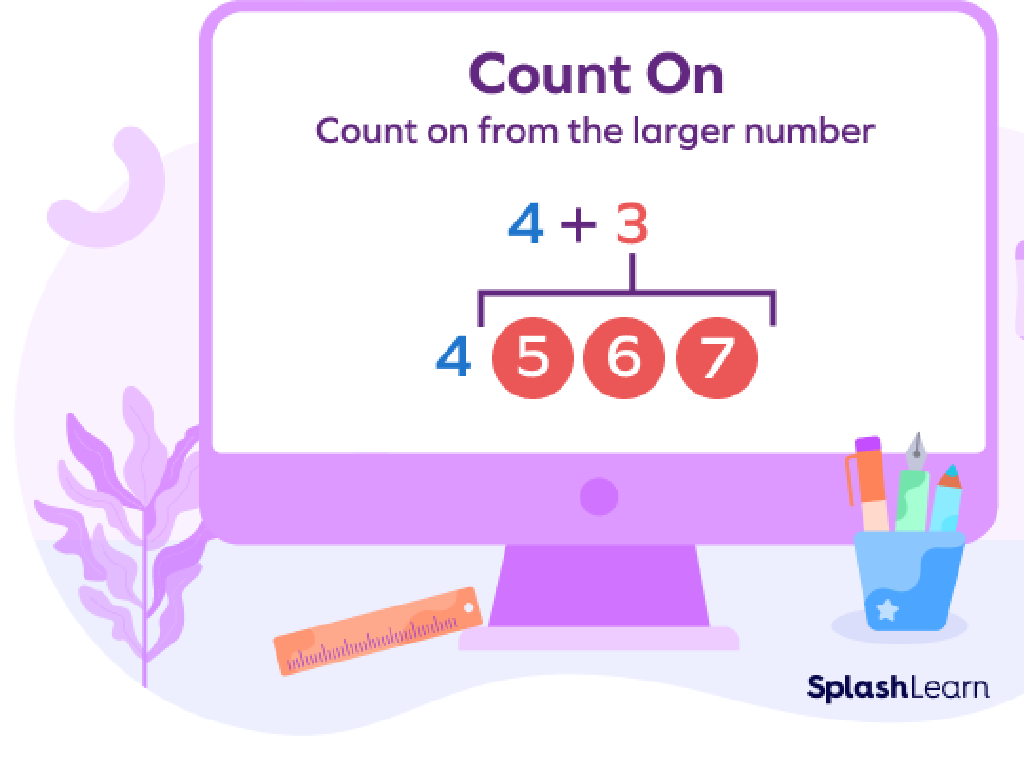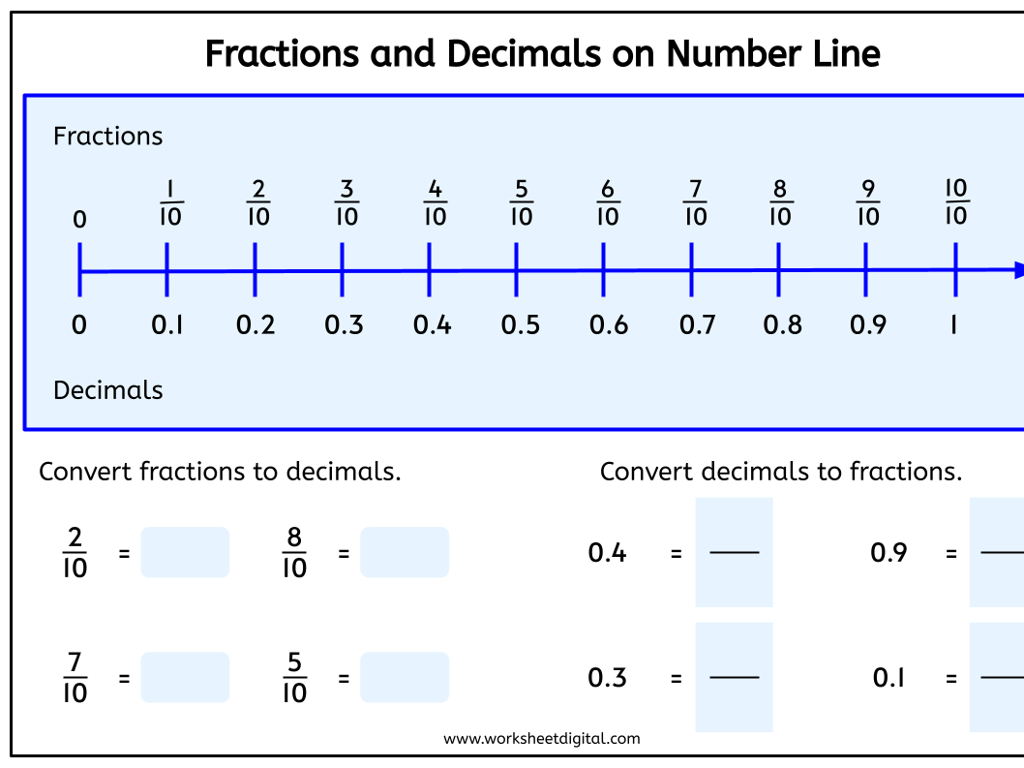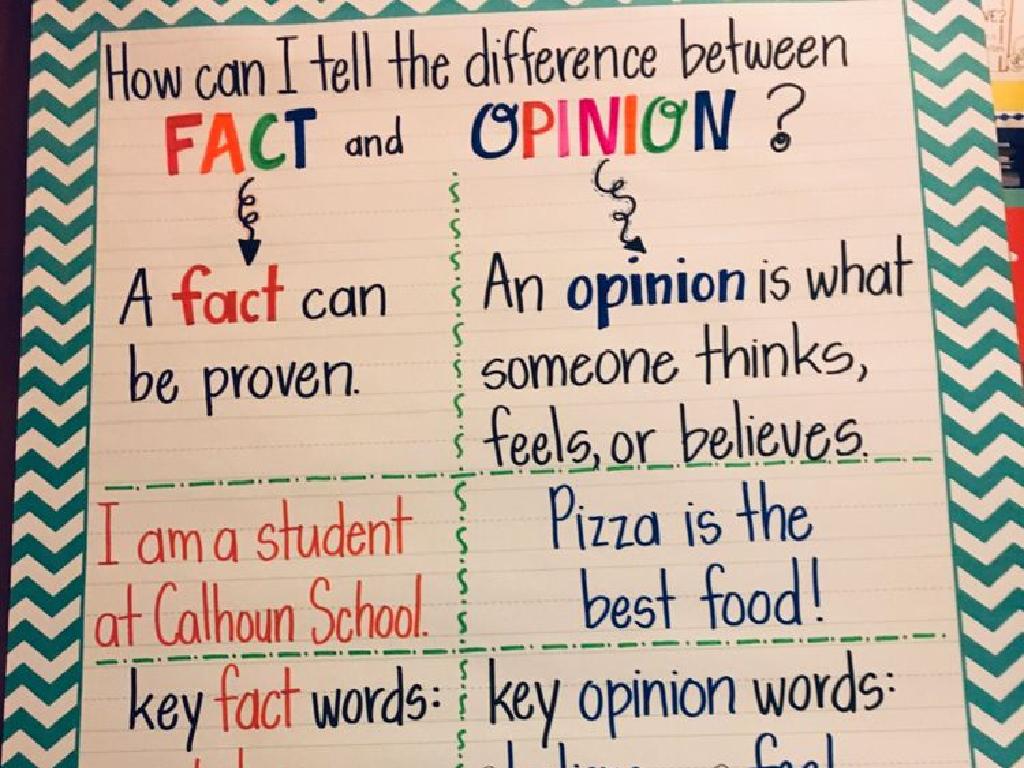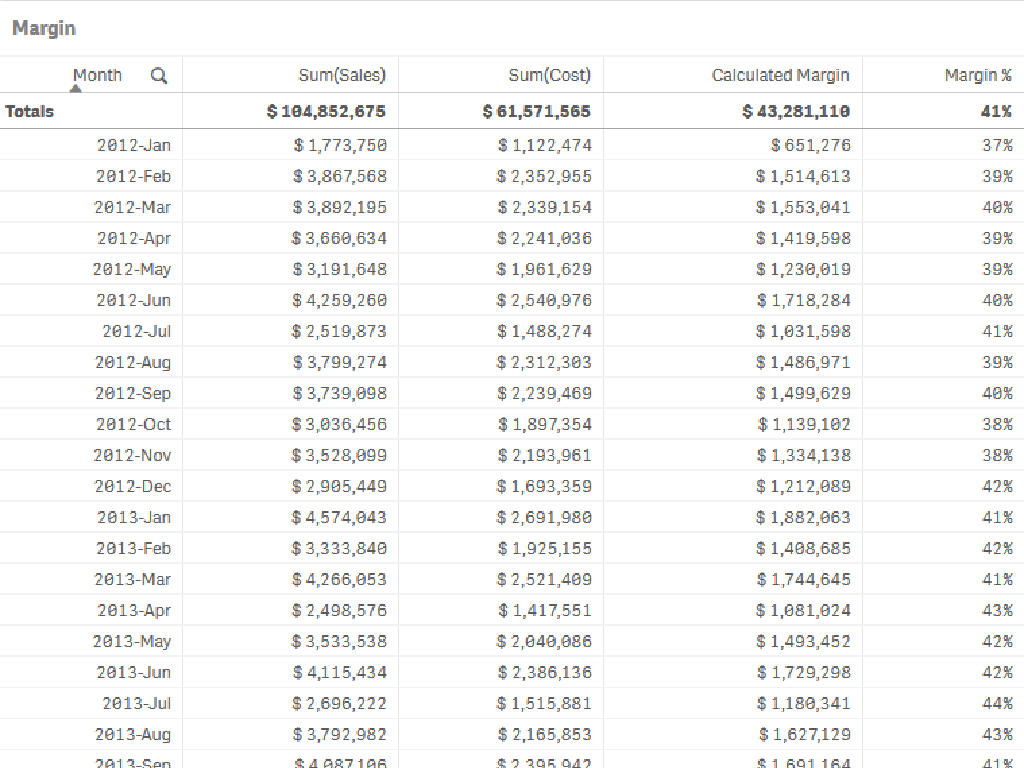Find The Range
Subject: Math
Grade: Fifth grade
Topic: Statistics
Please LOG IN to download the presentation. Access is available to registered users only.
View More Content
Exploring the Range in Statistics
– Statistics in daily life
– Range: What is it?
– The difference between the highest and lowest values in a set
– How to find the range
– Subtract the smallest number from the largest in your data set
– Examples of range
– Heights of classmates, scores in games
|
This slide introduces the concept of range within the subject of statistics, tailored for a fifth-grade audience. Begin by discussing how statistics play a role in everyday life, such as in weather forecasts or sports scores, to make the subject relatable. Explain that the range is a simple statistical tool that measures the spread of a set of numbers. To find the range, you take the highest number (the maximum) and subtract the lowest number (the minimum). Provide clear examples that are relevant to the students, like comparing the heights of classmates or the range of scores in different games they play. This will help them grasp the concept and see its practical application. Encourage the students to think of other examples where they can apply the concept of range.
Understanding Range in Statistics
– Range: highest minus lowest
– Subtract the smallest number from the largest in a set
– Measures spread of numbers
– A small range means numbers are close to each other, a large range means they’re spread out
– Example: Class heights
– If the tallest student is 5 feet and the shortest is 4 feet, the range is 1 foot
– Why range is important
|
The concept of range is a fundamental statistical tool that measures the spread or dispersion within a set of numbers. When explaining range to fifth graders, use concrete examples like the varying heights of students in the class. This visual and relatable example helps them grasp the concept that range is simply the tallest student’s height minus the shortest student’s height. Emphasize that understanding range can help us quickly see how much variation exists in a group of numbers. During the lesson, encourage students to practice by finding the range of different sets of numbers, such as their ages, shoe sizes, or scores on a test.
Calculating the Range in Statistics
– Identify highest & lowest numbers
– Subtract lowest from highest
– Range represents data spread
– The range shows how spread out the numbers in a set are
– Let’s solve an example together!
– Example: For the set 3, 7, 5, 10, the range is 10 – 3 = 7
|
When teaching students to calculate the range, start by explaining that the range is a measure of how spread out the numbers in a data set are. It’s found by identifying the highest and lowest numbers in a set. Once these are known, students subtract the lowest number from the highest to find the range. This simple subtraction helps us understand the interval between the extremes of our data set. To reinforce this concept, work through an example as a class. For instance, if we have the set of numbers 3, 7, 5, 10, we identify 10 as the highest and 3 as the lowest number. Subtracting these (10 – 3), we find the range to be 7. This activity will help students grasp the concept of range and its calculation.
Finding the Range in a Set of Numbers
– Understand the concept of range
– Identify the highest and lowest numbers
– Calculate the range: highest – lowest
– Example: Find the range of a set
– Set: 4, 7, 13, 15, 21. Range = 21 – 4 = 17
|
This slide is aimed at teaching fifth-grade students how to find the range in a set of numbers, which is a basic statistical concept. The range is the difference between the highest and lowest numbers in a set. Start by explaining the term ‘range’ and its importance in understanding data. Then, guide the students to identify the highest and lowest numbers in a given set. The next step is to subtract the lowest number from the highest to find the range. Use the example provided to illustrate the process. Encourage students to practice with different sets of numbers as homework to reinforce the concept.
Why is Range Important in Statistics?
– Range shows data variation
– It tells us the spread between the smallest and largest numbers
– Used in sports and weather
– For example, points scored in a game or daily temperatures
– Range applies in many areas
– Like in science experiments or stock prices
– Think of other range uses
|
The range is a simple statistical measure that provides insights into the spread of a set of data. It’s the difference between the highest and lowest values. Understanding the range helps us grasp the extent of variation, which is crucial in many real-world situations. For instance, in sports, the range of points scored can indicate consistency of a team’s performance. In meteorology, the range of temperatures helps predict clothing needs. Encourage students to think of other scenarios where knowing the range would be beneficial, such as in their own test scores or in measuring growth of plants in science class. This will help them see the practical applications of range in everyday life.
Class Activity: Range Detectives
– Group activity: Shoe size range
– Measure plant heights for range
– Survey: Find range of favorite numbers
– Discuss findings with the class
Share what you learned about range from each activity
|
Divide the class into small groups and assign each group the task of finding the range of shoe sizes among its members. Provide rulers or measuring tapes for students to measure the classroom plants’ heights and calculate the range. Conduct a quick survey to find out each student’s favorite number and then work together to find the range. After completing these activities, have a discussion session where each group can share their findings and reflect on what the range tells them about the data. This will help students understand the concept of range in a practical and engaging way. Possible variations for different groups could include finding the range of their ages, the number of letters in their first names, or the distance they can jump.
Wrapping Up: Range Detectives!
– Congratulations, Range Detectives!
– Range: Spread of numbers
– Range measures the difference between the highest and lowest numbers
– Homework: Family age range
– List family members’ ages, find the youngest and oldest, then calculate the range
– Share findings next class
– Be prepared to discuss how you found the range and what it tells about your family’s ages
|
Well done on learning about the range today! Remember, the range is a simple statistical tool that shows us the spread between the smallest and largest numbers in a set. For homework, apply this concept to your own family’s ages to see the range of ages among your relatives. This will help reinforce the day’s lesson and give you a practical understanding of how range works. In the next class, we’ll discuss your findings, which will help you see how the range can give us insights into real-life data sets. Keep up the great work, detectives!






